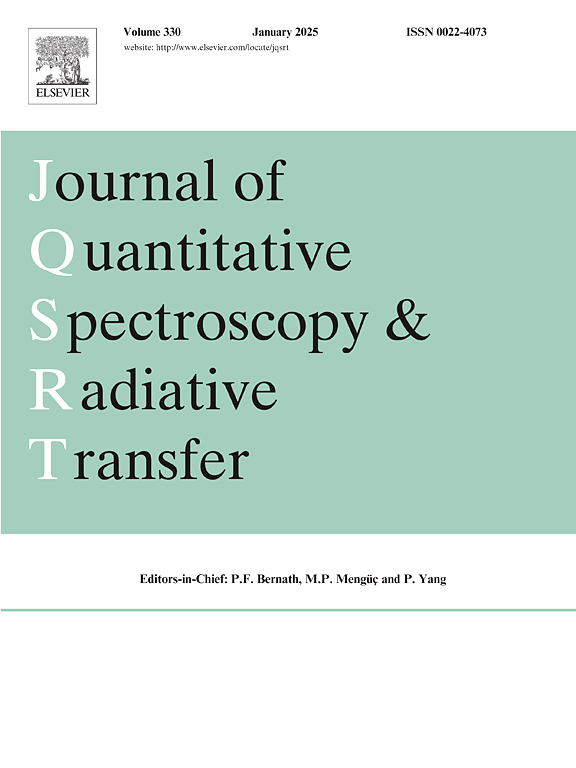StaR-LIF:二原子分子的状态分辨激光诱导荧光建模
IF 2.3
3区 物理与天体物理
Q2 OPTICS
Journal of Quantitative Spectroscopy & Radiative Transfer
Pub Date : 2024-10-29
DOI:10.1016/j.jqsrt.2024.109230
引用次数: 0
摘要
该研究引入了一种用于定量分析二原子分子状态分辨激光诱导荧光信号的新模型,即 StaR-LIF。该模型建立在碰撞-辐射转移过程的主方程基础上,其中纳入了关于单个自旋和奇偶分辨罗维量子水平之间碰撞能量转移率的最新数据,以及相关吸收和荧光跃迁的能级、线强度和展宽/位移参数的最新更新。为方便使用该模型,我们开发了一个基于网络的图形用户界面,并将其公布在 https://starlif.pku.edu.cn 网站上。当前模型在 NO、OH 和 CH 方面的应用实例已经展示,包括对可变脉冲宽度和饱和激发的影响以及碰撞转移过程中荧光光谱的时间演变进行参数研究。StaR-LIF 模型可以在广泛的气体动力学和激发条件下提供定量建模和分析能力,有望在未来复杂反应流的 LIF 研究中发挥作用。本文章由计算机程序翻译,如有差异,请以英文原文为准。
StaR-LIF: State-resolved laser-induced fluorescence modeling for diatomic molecules
This study introduced a new model for quantitative analysis of the state-resolved laser-induced fluorescence signal of diatomic molecules, namely StaR-LIF. This model is built upon a master equation of the collisional-radiative transfer processes, which incorporated the latest data on the collisional energy transfer rates between individual spin- and parity-resolved rovibronic quantum levels, together with the most recent updates on the energy levels, line strengths and broadening/shift parameters of the relevant absorption and fluorescence transitions. To facilitate the use of this model, a web-based graphic user interface has been developed and made available at https://starlif.pku.edu.cn. Example applications of the current model have been demonstrated for NO, OH and CH, including parametric studies on the effects of variable pulse width and saturating excitation, as well as the temporal evolution of fluorescence spectrum during collisional transfer. The StaR-LIF model can provide quantitative modeling and analysis capabilities over a wide range of gasdynamic and excitation conditions, and promises to be useful in future LIF studies of complex reacting flows.
求助全文
通过发布文献求助,成功后即可免费获取论文全文。
去求助
来源期刊
CiteScore
5.30
自引率
21.70%
发文量
273
审稿时长
58 days
期刊介绍:
Papers with the following subject areas are suitable for publication in the Journal of Quantitative Spectroscopy and Radiative Transfer:
- Theoretical and experimental aspects of the spectra of atoms, molecules, ions, and plasmas.
- Spectral lineshape studies including models and computational algorithms.
- Atmospheric spectroscopy.
- Theoretical and experimental aspects of light scattering.
- Application of light scattering in particle characterization and remote sensing.
- Application of light scattering in biological sciences and medicine.
- Radiative transfer in absorbing, emitting, and scattering media.
- Radiative transfer in stochastic media.

 求助内容:
求助内容: 应助结果提醒方式:
应助结果提醒方式:


